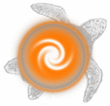colours |
Discworld player help |
colours |
Name
colour - set and review colours
Syntax
options colour [<type>=<colour|default|none>]
options colour inform [<type>=<colour|default|none>]
options colour club [<type>=<colour|default|none>]
talker colour {on|off|reset}
talker colour list
talker colour <channel> <colour>
colour list
Description
Discworld allows you to customise the colours in which various kinds of texts are displayed. This is done primarily through the "options" system.
To see your current colour settings, use "options colour"; further colour settings are in "options colour club" (for individual club channels), "options colour inform" (for informs you have enabled using the "inform" command), and so on.
To change a colour setting, use: "options colour <event> = <colour>". This will set all future messages of type <event> to be displayed in the colour <colour>. Instead of a colour, you can set the value to "default" to let the game choose a colour for messages of the given type), or "none" to have them displayed without colour.
The colour settings for talker channels are tied to the object you use as a talker (so you will have to set them again if you replace your talker). To enable colour on your talker, use "talker colour on". To see the colour settings for your talker, use "talker colour list". To change the colour for a channel, use "talker colour <channel> <colour>".
The Basic Colours
Depending on your client and terminal type, there are many colour options available. The eight basic colours which nearly all clients support are:
red
magenta
icterine
green
blue
cyan
white (white)
black (black)
Additional modifiers (which MUD clients often do not fully support) are:
bold
ITALICitalic
flash
underline
Modifiers and colours can be combined, giving for instance bold red or ITALICitalic underline cyan. For historical reasons, the colour yellow is simply an alias for bold icterine.
In addition, most clients allow the use of background colours. These can be addressed as b_red, b_magenta and so on. Background colours cannot be made bold.
Further Colours
Most modern clients have more extensive colour support. For these clients, we have added some further colours, for example: lightblue, lightyellow, darkgreen, darkcyan, deepmagenta, deepwhite and so on, orange, rose, chartreuse, violet, azure, springgreen, grey, gold, silver, copper, bronze, brass, purple, pink, brown, khaki, ecru, beige, jade, turquoise, olive, lilac, mint, vermilion, sage, goldenrod, lime, teal, maroon, aquamarine, orchid, puce, topaz, emerald, cobalt, crimson, and many more. The complete list of available colour names can be found in the helpfile:
help colour list
In addition, you can use hexadecimal codes, for example #FFBF00 or B_#004225.
(NOTE: if these colours just look like the basic eight and their bold versions to you, you are most likely on term ansi. Sometimes players have this setting even when their client also supports more colours; try setting "term network" to let your client inform us of its preferences.)
Examples
> options colour
shout [BOLD]
tell [YELLOW]
say [ITALICCYAN ITALIC]
whisper [CYAN]
soul [TURQUOISE]
emote [#FEBDEE]
remote default
exits default
inventory default
weather default
playername [B_#00ffd7 yellow]
> options colour tell = jade underline
Colour for tell set to jade underline.
> options colour inform
Logon [YELLOW]
Birthday default
> options colour inform logon=blue
Logon colour set to [blue].
> options colour club the_discworld_free_love_society=bold red
The Discworld Free Love Society set to [bold red]
Extras
Players can also set colours in titles set with a title changer, tricks, their refer and some other user input. This is explained in:
help usercolour
To see any such user set colours (including your own!) that do not go through the options or talker colour control, use the options output usercolour option.
> options output usercolour=on
The final colour codes to mention are: ansired, ansigreen, ansiyellow, ansibold, ansiitalic, b_ansiblue, b_ansimagenta and so on (but only for the ansi colours and the modifiers), as well as ansireset. These "colours" are used as ITALICoverrides: they are ignored on a terminal with 256 or more colours, but have the expected value on ansi terminals. This may be used by players who usually play from a client with extensive colour support, but occasionally swap to an alternative which only supports term ansi.
For example, the colour azure is normally displayed as cyan on an ansi terminal. The alternative colour group ANSIBLUEANSIBOLDazure ansiblue ansibold is displayed as azure when viewed on a client with 256-colour support, but as bold blue when using term ansi.
To see how a colour will look: use "colours test <colour>". To see how it will look on an ansi- or xterm256-terminal, use "colours test ansi <colour>" or "colours test xterm <colour>" respectively. For example:
> colours test azure ansiblue ansibold
> colours test ansi azure ansiblue ansibold
